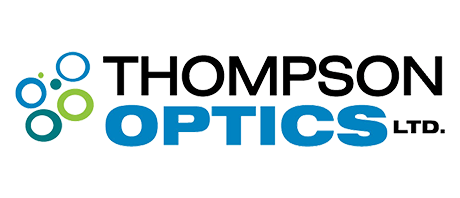DOCTORS AT THOMPSON OPTICS HAVE SIGNIFICANT EXPERIENCE FITTING SCLERAL LENSES.
"WE HAVE FIT OVER 10,000 LENSES"
Keratoconus is a progressive disease that involves the thinning and steepening or “bulging” of some, but not all, of the cornea. The area affected is usually at or near the center of the cornea. About one in 2,000 people are affected by keratoconus. The disease progresses for four to seven years. Keratoconus affects both eyes in about 96% of cases, with one eye typically progressing more than the other. In keratoconus, the cornea becomes very irregular in shape and increases in astigmatism. Because of the cornea’s unusual shape, eyeglasses and soft contact lenses can’t fully correct vision to an acceptable level.
GP CONTACTS FOR KERATOCONUS
About 15% of keratoconic individuals ultimately require a corneal transplant, but most can benefit from wearing GP contact lenses. Watch this video about Brian Davis, a keratoconus patient who wears GP lenses over soft lenses (called a “piggyback fit”) to correct his vision. The rigidity of a GP lens helps to smooth out the front surface of the eye and improve vision — usually by several lines on the visual acuity chart. GP contact lenses for keratoconus are custom-fitted to an individual’s eyes with assistance from a “color map” that depicts the topography of the cornea. This helps the eye care practitioner to choose the best diagnostic lens to fit. Newer GP Lens Options for Keratoconus New GP lens designs have been introduced that allow better alignment of the back surface of the lens to an irregular cornea. One option is large-diameter GP lenses, known as scleral or semi-scleral lenses. They’re so named because the lens is shaped to remain completely above the cornea, without touching it at all; the outer edges of the lens rest on the sclera (the white part of the eye). The space between the lens and the cornea is filled by tears. This provides comfort as well as a smooth optical surface that corrects vision problems. Hybrid contact lenses are another innovation that benefits people with keratoconus. These lenses use a GP center, which provides the crisp optics for which GPs are known, along with a soft outer ring. Hybrid contact lenses may be used when a GP lens alone can’t provide an optimal fit or causes discomfort. In such cases, an eye care practitioner may also resort to a “piggyback” fit — that is, a GP lens on top of a soft lens. In the video featured on this page, one wearer describes his experience with a piggyback fit for keratoconus. At Thompson Optics we fit all these types of lens designs for patients with Keratoconus, for a free consultation call us to book an appointment.
